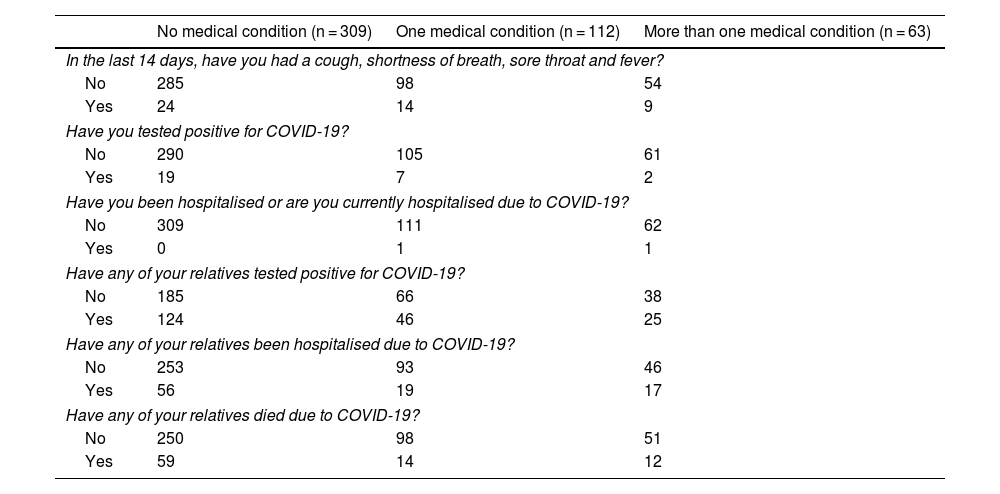This study aims to determine differences between the number of underlying medical conditions, depression, and anxiety, when controlling for the covariates of age, sex, and completed education.
MethodsParticipants (n = 484) indicated the number of medical conditions present during the survey, also including the PHQ-9 and GAD-7, to assess depression and anxiety, respectively.
ResultsDifferences were found between groups of medical conditions and the combined values of PHQ-9 and GAD-7 after controlling for the covariates mentioned above (F4,954 = 5.78; Wilks’ Λ = 0.95; P < 0.0005). The univariate tests showed differences for PHQ-9 (F2,478 = 8.70; P < 0.0005) and GAD-7 (F2,478 = 11.16; P < 0.0005) between the 3 groups. Finally, post-hoc analysis showed differences between participants with one medical condition and with no medical condition (PHQ-9: MD = 1.82; 95%CI, 0.25–3.40; GAD-7: MD = 1.73; 95%CI, 0.55–2.91), and between participants with more than one medical condition and participants with no medical condition (PHQ-9: MD = 3.10; 95%CI, 1.11–5.10; GAD-7: MD = 2.46; 95%CI, 0.97–3.95).
ConclusionsOur results suggest that people who had a medical condition during the COVID-19 pandemic were more prone to developing severe symptoms of anxiety and depression.
El objetivo de este estudio es determinar diferencias entre el número de condiciones médicas subyacentes, depresión y ansiedad, al controlar por las covariables edad, sexo y educación completa.
MétodosLos participantes (n = 484) indicaron el número de condiciones médicas presentes durante la encuesta, incluyendo también el PHQ-9 y GAD-7 para evaluar la depresión y la ansiedad respectivamente.
ResultadosSe hallaron diferencias entre los grupos de afecciones médicas y los valores combinados de PHQ-9 y GAD-7 después de controlar por las covariables mencionadas (F4,954 = 5,78; Wilks’ Λ = 0,95; p < 0,0005). Las pruebas univariadas mostraron diferencias para PHQ-9 (F2,478 = 8,70; p < 0,0005) y GAD-7 (F2,478 = 11,16; p < 0,0005) entre los 3 grupos. Finalmente, el análisis post-hoc mostró diferencias entre los participantes con una condición médica y sin ninguna condición médica (PHQ-9: MD = 1,82; IC95%, 0,25−3,40; GAD-7: MD = 1,73; IC95%, 0,55−2,91) y entre participantes con más de 1 afección médica y participantes sin afección médica (PHQ-9: MD = 3,10; IC95%, 1,11−5,10; GAD-7: MD = 2,46; IC95%, 0,97−3,95).
ConclusionesNuestros resultados indican que las personas que tuvieron una afección médica durante la pandemia de COVID-19 son más propensas a desarrollar síntomas graves de ansiedad y depresión.










